Off late, I have developed a lot of interest in Lebesgue Measure, thanks to the math- fin exposure over the last few years. Being a practitioner instead of a theorist/academician has its own advantage. You don’t get wedded to one concept or one theory. You take a random sample of all the techniques which have been applied to solve a problem and based on the context, you can choose one from the random sample OR create a customized method from that random sample of methods. Sometimes it also helps to see how various problems have been approached by the pioneers in any field. The Calculus Gallery is one such book which gives the approach followed by pioneers in Calculus to solve various kinds of problems.
My main interest though was the chapter titled Lebesgue describing the work done by Henri Lebesgue. However to appreciate the last chapter, it is better to go through the initial chapters of the book that document the trials/ failures/ breakthroughs of various mathematicians /scientists over the past few centuries.
Calculus has had a very interesting history where various mathematicians, scientists, scholars have contributed to its development. This book summarizes the main personalities who played a role in these developments. Let me attempt to summarize the towering personalities mentioned in the book.
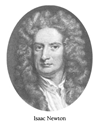
Issac Newton ( 1642 – 1727)
Mathematicians credit Newton as the creator of calculus. A physicist by background, he invents calculus to help his work. The book talks about Newton’s early achievements like generalized binomial expansion for turning certain expressions to infinite series, methods to invert such infinite series and quadrature rules. In his manuscript , “De Analysi”, Newton spelled out the rules for determining quadrature. In modern calculus jargon, his rules basically were relating to switching summation and integrand & using infinite series in the evaluation of integrals. The highlight of this chapter is the sine series expansion. Most of us , if asked to expand sin(x) would just use taylor series and produce the infinite series expansion. But that’s now how Newton visualized. Instead he derived a series for arcsine and then inverted that formula to develop sin(x) expansion. Mathematics, as evident from this simple example has never evolved as portrayed by textbooks. It developed by fits and starts and odd surprises.
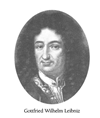 Gottfried Wilhelm Leibniz ( 1646 – 1716)
Gottfried Wilhelm Leibniz ( 1646 – 1716)
Leibniz is also credited for inventing Calculus. There is a bitter debate about whether he stole it from Newton or nor. Well, that’s useless for us as what matters are his ideas which were splendid to say the least. Leibniz had an immense talent for coming up notations. His notation for integral and differentiation was one of the reasons for the spread of calculus in Europe as compared to UK (Newton’s notation of fluxions was not viral in nature). Finding area under the curve was the hottest topic during these times and author explains the Leibniz approach, a.k.a, the transmutation theorem. Also mentioned is the way in which Leibniz derived the infinite series expansion of pi. Besides these mentions, Leibniz codified and published his ideas on differential and integral calculus, thus popularizing it amongst the European Mathematicians and Scientists.
 Jakob Bernoulli ( 1654 – 1705) & Johann Bernoulli ( 1667 – 1748 )
Jakob Bernoulli ( 1654 – 1705) & Johann Bernoulli ( 1667 – 1748 )
If Newton and Leibniz were the architects of Calculus , the Bernoulli brothers were builders. They worked incessantly on infinite series, brought in terms such as “integral” in to the calculus vocabulary.Jakob dealt extensively with arithmetic, geometric, harmonic series and figurative series. Besides making immense contribution to the understanding of calculus, Johann Bernoulli also mentored Euler, regarded as one of the history’s greatest mathematicians.
Leonhard Euler ( 1707 – 1783 )
There is virtually no field of mathematics where he has not made contributions. Euler is often called the publishing genius as he is credited to have written 18 thick volumes and nearly 9000 pages on just “analysis” alone. The book covers 5 aspects out of the humungous contribution by Euler. Euler was the first person to bring forward the ratio view of calculus. He was of the view that infinitesimal quantities by themselves did not mean anything and it is always the study of ratio dy/dz that is important. He also wrote 3 volumes of books where he formulated and proved all kinds of integrals. Instead of attacking one infinite series at a time, he came up with a solution which gave the result to a set of infinite series all at once. Perhaps one of the significant contributions of Euler that is evident in stats and probability is the gamma function. Some of the popular density functions have gamma function embedded in it and every stats researcher stumbles on to it at some point or the other.
In spite of the contribution of the above personalities, calculus had shaky foundations. Most of the techniques used infinitesimals erratically. Integration of infinite series was done as though it was finite series. No justifications were provided. In the meantime, another mathematician Lagrange offered a different view : Infinite series as a source of differential calculus. He formulated everything in terms of infinite series. Alas! a disaster struck him when Cauchy presented a counter example where two functions have the same infinite series. So, even after 200 years of developments in calculus, there was a need to work on revamping the entire field from its foundations to give it a definitive rigour.
Augustin-Louis Cauchy ( 1789 – 1857 )
Cauchy’s stamp on calculus is of gigantic proportions. He grounded intuitive notions of continuity and integrability by laying solid foundation. He first defined limit and then attempted to formulate continuity based on the concept of limits. One of the Cauchy’s achievement was to prove everything using rigorous analytic methods. Intermediate Value theorem which sounds intuitive to any reader , was first dealt with a proof for it by Cauchy. He assumes nested interval property and shows the proof. This is a classic case where pursuit of rigor brought in wonderful new concepts like Axiom of Completeness later worked out by other mathematicians based on Cauchy’s work. Cauchy also proved mean value theorem and elevated it to the a place where it became central to the development of calculus. Before Cauchy, there was a view was integral was anti-differentiation. However Cauchy changed that view and believed that integration should exist by itself . His revolutionary idea was that integral should be linked to the limit rather than the continuity of a function. He then worked to show the connection between differentiation and integration, which is popularly known as the Fundamental theorem of Calculus. However these herculean efforts/ proofs had a few wrinkles like his assumption of uniform continuity of the functions. This and other wrinkles were addressed by Riemann.
Georg Friedrich Bernhard Riemann ( 1826 – 1866 )
Riemann’s provocative idea was to divorce integrability from continuity. He pursued a solution to the question,” What does definite integral mean ?“. His approach is probably taught as the first lesson in integration across most schools. The concept of Riemann Sums was introduced and integration was tightly linked to the convergence of the infinite series of Riemann sums. More importantly, he showed that Dirichlet function was not integrable, a breakthrough in calculus. He also gave an example of a discontinuous function that was perfectly integrable thus raising a critical question,” How discontinuous can an integrable function be ? “
Joseph Liouville ( 1809 – 1882 )
In the context of calculus, Liouville is famous for proving that certain integrals have no closed form solution and proving that transcendental numbers exist. The proof is covered in this book mainly to show the fantastic application of inequalities which was later adopted by Weierstrass to bring enormous precision in the definitions of limit/continuity/differentiation etc
Karl Weierstrass ( 1815 – 1897 )
The modern era would not arrive until the last vestige of imprecision disappeared and analytic arguments became for all practical purposes, incontrovertible. The mathematician most responsible for this transformation is Karl Weierstrass. He defied limit using epsilon delta notation with inequalities thus removing all traces of geometry in a definition. He also worked on the wrinkle in Cauchy’s proof – i.e assumption of uniform convergence. His major contribution came in the form 3 theorems. First relating to the convergence of a sequence of continuous functions, Second relating to the switch of integrand and the summation sign and third, the most helpful Weierstrass approximation theorem. He also came up with a mind blowing counter example of a continuous no where differentiable function which lead the subsequent mathematicians to make real analysis more rigorous.
So, are all the flaws worked upon/ theory complete / acme of real analysis has been reached ? Well of course not… A series of counter examples showed that the problems in the field were far from addressed. Thomae function showed that inspire of infitude of discontinuities, the function was integrable over [0,1] . There are three famous counter examples quoted in this book.
-
First example shows that even though the function is discontinuous at the origin , it satisfies intermediate value property over every interval.
-
Second example shows that “every where continuous function” is not the same as “ able to draw with out lifting the pencil”.
-
Third example shows that a differentiable function can be discontinuous.
The functions thus raised important questions which lead to a completely different and radical development in the field of calculus.
-
Can we construct a function continuous at each rational and discontinuous at each irrational ?
-
How discontinuous can a Riemann integrable function be ?
-
How discontinuous can a derivative be ?
-
How, if at all, can we correct the deficiencies in the Riemann integral?
Calculus was in need of fresh eyes!
Georg Cantor ( 1845 – 1918 )
Bertrand Russell described Cantor as “one of the greatest intellects of nineteenth century. Developments in the nineteenth century placed calculus squarely upon the foundations of limits. It had become clear that limits, in turn, rested upon properties of the real number system, foremost amongst which is what we now call completeness. Cantor in his 1874 paper demonstrated that a sequence cannot exhaust an open interval of real numbers. He then went on to define cardinality of a set and showed that there are different types of infinities. Cantor proved that a denumerable set, although infinite , was insignificantly infinite when compared to a non-denumerable counterpart. This dichotomoes between large sets and small sets were also shown in other analytic settings. Cantor is also famous for his continuum hypothesis which says that there is no set A which follows the inequality : Cardinality of N < Cardinality of A < Cardinality of R. Cantor’s distinction of large sets and small sets set forth interesting developments in the field.
Vito Volterra ( 1860 – 1940 )
Vitl Volterra became famous for his work on pathological functions. He produced a counter example of a function which was differentiable everywhere, was bounded, yet was not riemann integrable. His other notable work was on showing that there is limit to this pathological functions, for example, there can be never exist a continuous function g defined on R such that g(x) is rational when x is irrational and g(x) is irrational when x is rational. This chapter on Volterra also mentions about Hankel’s taxonomy of functions which was very promising, but in the end was fallen wayside.
Rene Baire ( 1874 – 1932 )
The concept of no-where dense sets was introduced by Rene Baire . The reason behind thinking about dense and nowhere-dense sets was to classify the functions in various categories based on their discontinuity/integrability/differentiability behaviour. Many mathematicians and Scientists were after this goal of classifying functions.
Baire strongly believed that functions and sets are closely related. He developed the concepts behind nowhere-dense sets to show the vast difference between Category 1 Baire Set and Category 2 Baire Set. He also introduced topological view of the sets which had important consequences for mathematical analysis. Baire’s category theorem stated that one cannot obtain all points of a continuous interval by means of a denumerable infinity of nowhere dense sets. A differentiable function can be discontinuous. “How discontinuous can a derivative really be ?” Thanks to Baire, the answer is “Not very, for it must be continuous on a dense set”.
Henri Lebesgue ( 1874 – 1941 )
It was obvious by this time that there were problems with Riemann Integral. Both fundamental theorem of calculus and the interchange of limits and integrals were false with out assumptions that seemed overly restrictive. For example Dirichlet’s function could not be used while interchanging limits and integrals. Till Lebesgue entered the scene, mathematicians world over were trying to complete the following statement.
A bounded function f is Riemann integrable on [a,b] if and only if Df, the set of points of continuity is ???
It was evident that this missing condition was not “finite”, nor “denumerable”, not “first category”. Lebesgue was to change all that and provide a conclusive answer and complete the above statement. He developed on the concept of outer cover, developed by Axel Harnack, introduced measure of a set and thus was able to formulate an alternate way to look at Baire’s category 1 sets and category 2 sets. With his measure theoretical approach, he completed the above statement with the a simple answer
"For a bounded function f to be Riemann integrable on [a,b], it is necessary and sufficient that the set of its points of discontinuity be of measure zero”
Lebesgue measure provided a new dichotomy between small and large sets. He went on to introduce measurable functions which encompassed a much larger class of functions. Subsequently he used measurable functions to develop Lebesgue integral which was far more generic than Riemann integral. For instance Dirichlet’s function could be easily be integrated using Lebesgue integration. A whole host of things became tractable once viewed through the lens of measurable functions and lebesgue integral. Pointwise limit of a sequence of measurable function was also a measurable function. Limits and summation could be interchanged with mild conditions.Also for the fundamental theorem of calculus to hold good, there was no need to attaché restrictive conditions to the derivative. By 1904, Lebesgue theory provided a new direction to calculus and real analysis.
If you want to know the major ideas developed in Calculus and Real analysis over a period of 3 centuries, this is one of the best books out there. Though this book is in theorem /proof + story format, all the proofs are explained intuitively with minimal amount of math. A book that explains the intuition behind lebesgue theory and traces the developments leading to lebesgue theory is priceless , for an aspiring quant.
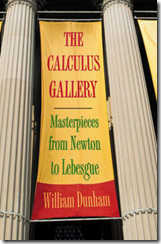
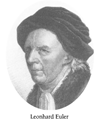
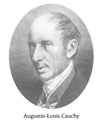
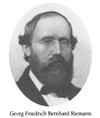
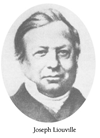
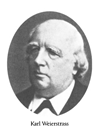
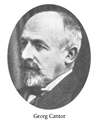
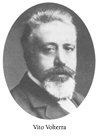
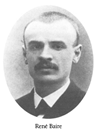
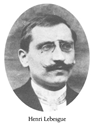
March 22, 2011 at 5:29 pm
[…] of real analysis and historical developments of real analysis. My favourite in this genre is “The Calculus Gallery”. I have read it about 3-4 times. Every time I read, I find something that makes me wonder at the […]
January 8, 2012 at 12:18 pm
[…] Well , the development of Lebesgue integration is in itself is a fantastic story and “The Calculus Gallery” covers it in a splendid way. Kolmogorov also derived Fokker Planck equation in his monograph, […]
January 27, 2013 at 11:23 pm
[…] Summary […]